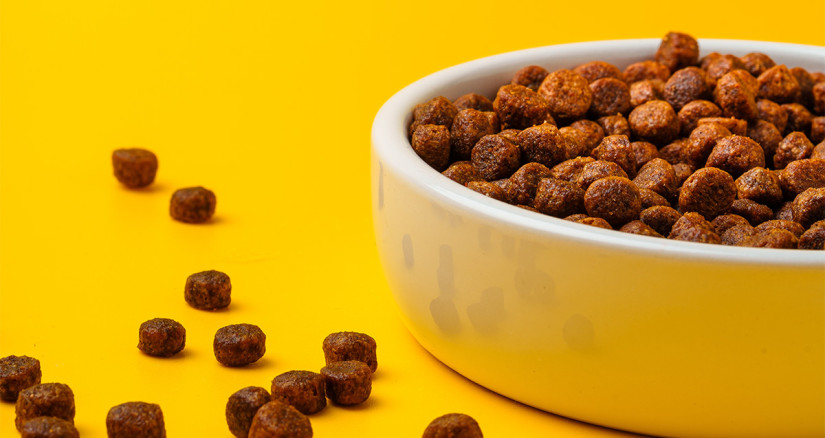
Starch Cook and Extrusion: The Science of Starch Cook
Starch gelatinization, or "starch cook," is a key process in pet food manufacturing that transforms starches using heat and moisture. This chemical transformation enhances the functionality and digestibility of starch, playing a critical role in the texture, stability, and nutritional quality of pet foods, especially kibble. Understanding the intricacies of starch cook and the impact that process settings have on starch cook will determine the level of optimization success you will have on feeding experience and overall product performance.
What is Starch Cook?
Starch cook refers to the process where starch granules undergo an irreversible chemical change when exposed to heat and moisture. During this process, the two main components of starch molecules, amylose and amylopectin, undergo significant structural changes that impact their solubility, where increased water interaction promotes swelling, gel formation as amylose leaches and binds to water to create a network, and viscosity, which rises due to the thickening effect of the gelatinized starch.
Amylose is a linear molecule and has lower water solubility. Amylose forms firm gels, contributing to the binding and structure of kibble. Amylopectin is a highly branched molecule and more soluble in water than amylose. Amylopectin provides viscosity, clarity, and stability to products.
Stages of Starch Cook
The starch cook process occurs in three distinct stages.
- Hydration: In the first stage, starch granules begin absorbing water almost immediately when exposed to temperatures ranging from 30 to 70°C.1 The heat accelerates water absorption, allowing granules to rapidly expand as they take in moisture. This is crucial yet rapid, as it primes the starch for gelatinization.
- Gelatinization: Gelatinization follows hydration almost seamlessly. At 60 to 80°C, the starch granules burst, releasing amylose and amylopectin.2 This is the key phase where not only texture, binding, and stability of the product is enhanced, but the starch molecules are also made more accessible for enzymatic breakdown in the animal during digestion.3 This transformation occurs rapidly, typically within minutes in an extruder. The high temperatures and pressure of the extrusion process help with uniformity of gelatinization.4 During extrusion, the efficiency of these two stages—hydration and gelatinization—is critical to maintaining product consistency and increasing the digestibility of the food.3
- Retrogradation: As the kibble cools after extrusion, the starch molecules begin to realign and recrystallize. This process, called retrogradation, influences the final texture of the kibble. Excessive retrogradation can lead to the formation of resistant starch, which is more difficult for the animal to digest.5 Proper control of cooling and drying is essential to maintain the right texture and degree of retrogradation, which could negatively affect digestibility, absorption of nutrients, and the shelf life of the product.
Why Starch Cook Matters in Pet Food Manufacturing
Starch cook is more than just a technical process; it is a critical factor that allows for the starches to bind with other ingredients, creating a cohesive, high-quality pet food that meets nutritional needs and enhances the feeding experience. The feeding experience is directly influenced by how well the starch is cooked, as it affects texture, aroma, mouthfeel, and overall enjoyment for pets.6-8
How BSM Partners Can Help
At BSM Partners, we’re dedicated to helping clients craft quality products that excel beyond mere extrusion. We focus on creating highly nutritious and digestible products tailored to your needs. Our expertise extends to perfecting the starch cook process, where we help clients and manufacturers "pull the right levers" to optimize and enhance their cook process for the best possible results.
References
- BeMiller JN. Carbohydrate chemistry for food scientists. Elsevier; 2018.
- Copeland L, Blazek J, Salman H, Tang MC. Form and functionality of starch. Food hydrocolloids. 2009;23(6):1527-1534.
- Wang S, Copeland L. Molecular disassembly of starch granules during gelatinization and its effect on starch digestibility: a review. Food Funct. 2013;4(11):1564-1580.
- Chen P, Yu L, Simon GP, Liu X, Dean K, Chen L. Internal structures and phase-transitions of starch granules during gelatinization. Carbohydrate Polymers. 2011;83(4):1975-1983.
- Wang S, Li C, Copeland L, Niu Q, Wang S. Starch Retrogradation: A Comprehensive Review. Comprehensive Reviews in Food Science and Food Safety. 2015;14(5):568-585.
- Mouritsen OG, Styrbæk K. 5. Playing Around with Mouthfeel. In: Mouthfeel. New York Chichester, West Sussex: Columbia University Press; 2017:113-206.
- Koppel K, Adhikari K, Di Donfrancesco B. Volatile Compounds in Dry Dog Foods and Their Influence on Sensory Aromatic Profile. Molecules. 2013;18(3):2646-2662.
- Koppel K, Gibson M, Alavi S, Aldrich G. The Effects of Cooking Process and Meat Inclusion on Pet Food Flavor and Texture Characteristics. Animals (Basel). 2014;4(2):254-271.
Follow us on LinkedIn for the latest updates on all things happening here at BSM Partners.
About the Author
Dr. Sydney McCauley is a Board-Certified Companion Animal Nutritionist and earned both her bachelor’s and doctoral degrees at Virginia Tech in Animal and Poultry Sciences. McCauley’s research was in nutritional physiology with a focus on understanding the effects of low birth weight on glucose, fatty acid, carbohydrate, and amino acid metabolism in skeletal muscle and overall metabolic homeostasis during neonatal development.
This content is the property of BSM Partners. Reproduction or retransmission or repurposing of any portion of this content is expressly prohibited without the approval of BSM Partners and is governed by the terms and conditions explained here.